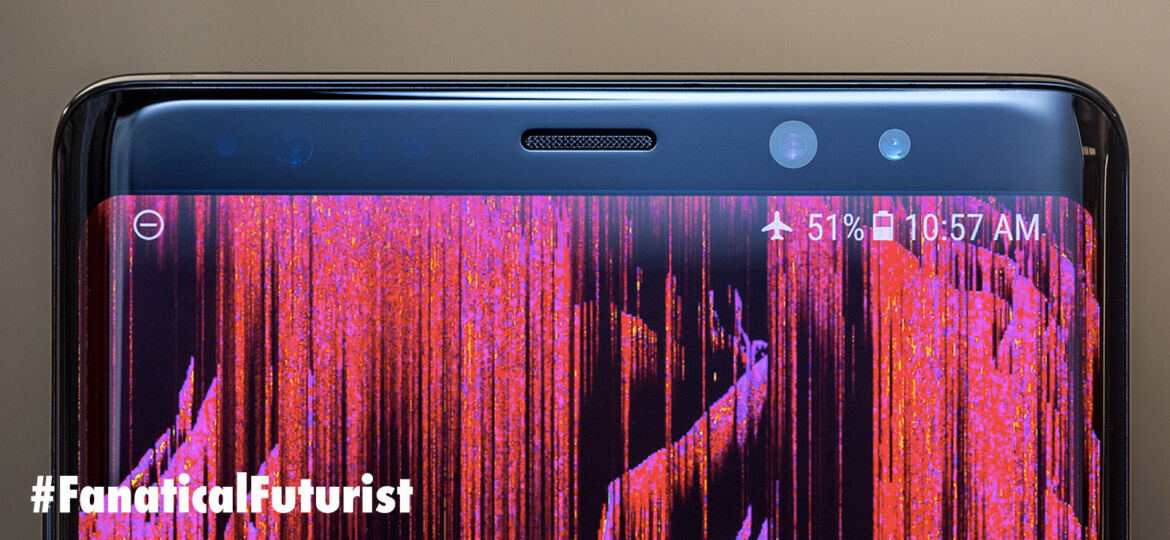
WHY THIS MATTERS IN BRIEF
Advances in nanotechnology and nanophotonics are helping companies make great strides in creating, and bringing to market, new holographic display systems and they’re only just getting started.
A few months ago cinema camera maker RED came out with the surprise announcement that they were developing a smartphone of their very own, but it wasn’t that what set the announcement apart from the hundreds of other companies who are also trying their hand at bringing a new smartphone to market, it was the fact that this was going to be the world’s first holographic smartphone. But, naturally, they were light on the technical details, only announcing that it, the Hydrogen One, would cost around $1,195 to buy as and when it hit the market.
Now, some months on from that announcement we have some more details – RED’s screen technology comes from their exclusive partnership with a startup called Leia Inc., a spin off from HP Labs in 2014 that describes itself as the “the leading provider of light field holographic display solutions for mobile,” and here’s their description of how the technology works, with a video from a while ago:
“Leia leverages recent breakthroughs in Nano-Photonic design and manufacturing to provide a complete light field holographic display solution for mobile devices, through proprietary hardware and software. The Silicon Valley firm commercializes LCD based mobile screens able to synthesize light field holographic content while preserving the normal operation of the display.”
The idea behind the tech is that the screen projects 3D objects that you can view from different angles based on your physical position. For example, a mapping application could theoretically look like a little model of a city with buildings poking out of the screen, and you’d be able to interact with the objects “above” the display using hovering like gestures that are enabled by Leia’s partnership with Synaptics.
The technology works using diffraction, producing a light field illumination that has a layer of nanostructures that are blended into a conventional LCD screen, and Leia claims this “diffractive light field backlighting” layer doesn’t significantly compromise the display’s quality, battery consumption, or thickness.
As for how well it works in the field though well one lucky blogger, Brownlee, managed to get his hands on one and said he was “pretty impressed” by it, but that it “definitely wasn’t perfect” with some stuttering and light bleed issues. Here’s his video of it:
#LIGHTFIELD classic #videogames at #DisplayWeek17. Thanks @LeiaInc pic.twitter.com/jLxOGqiH93
— FoVI3D (@3D_FoVi) May 25, 2017
Meanwhile RED president Jarred Land has also went on to say that Brad Pitt and David Fincher are also impressed by the tech so great for them, however, provided the tech eventually works as advertised both companies will need to have a chunk of content lined up to maximise its impact. And as many manufacturers know from experience this can be a chicken and egg problem – if RED’s product doesn’t sell well noone will create content for it, but noone will buy it if they can’t get the content… oh the dilemma.
“The Hydrogen program will feature stunning holographic content and 3D sound for movie viewing, interactive gaming, social messaging and mixed reality,” said Land, without saying where the content was coming from.
However, whether the phone takes off or not, one thing’s certain it’s an interesting concept and one day, as we continue to see advances in a broad array of holographic and “holographic like” technologies, such as the world’s first “holographic” display table that was unveiled recently, we’ll be able to watch star fighters zoom around our living rooms for “real.”
The Hydrogen One should be out mid 2018.
















